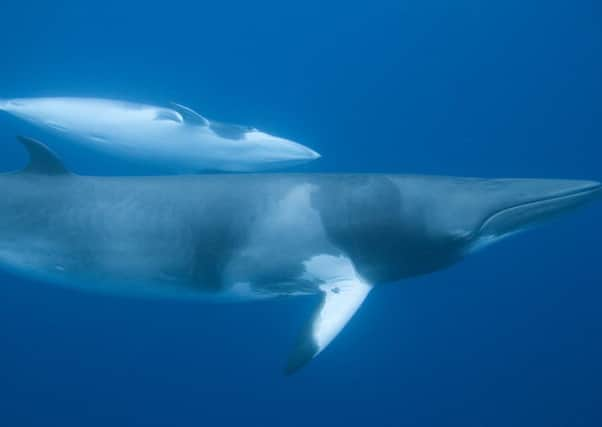Subsea pulse can safeguard whales during offshore turbine construction


Noise generated by intensive pile-driving work during erection of turbines, which is magnified underwater, can be harmful to marine mammals.
The potential risk of injury or disturbance to the creatures during construction of offshore renewable energy developments has been identified as a key hurdle for projects in UK waters.
Advertisement
Hide AdAdvertisement
Hide AdThe presence of marine mammals near wind farm sites is currently carried out by observers posted offshore or by underwater monitoring.
If an animal is detected close to a construction site, piling activity is halted until it has swum clear of the identified danger zone.
Previous studies have demonstrated that acoustic deterrent devices (ADDs) are effective at deterring seals and harbour porpoises.
Now experiments carried out for the Carbon Trust show for the first time that the technology can be used as a warning signal for minke whales, a key cetacean species found in UK waters.
Scientists working on the Offshore Renewables Joint Industry Programme (ORJIP) found the protected whales showed a clear response to the pulses.
The latest results could help safeguard internationally important species while also benefiting the offshore wind industry by reducing building delays.
Olivia Burke, manager of the ORJIP ADD project at the Carbon Trust, said, “The results from this research are really exciting and are a result of many organisations working together to help shed light on this important area.
“The findings will help increase industry and regulator confidence in the use of ADDs to actively manage the protection of marine mammals during the piling phase of construction.”
Advertisement
Hide AdAdvertisement
Hide AdORJIP was set up in 2012 by the UK government’s energy department, the Crown Estate, Marine Scotland and 16 offshore wind developers, including Innogy, Ørsted and Statoil.
A joint statement from Innogy, Statoil & Ørsted said: “This is an important project and we have proactively engaged and supported the ORJIP ADD programme in order to ensure our projects look after the safety of these important species.
“We are pleased to see that these trials have increased the evidence base proving the efficacy of ADDs in deterring marine mammals.”
The study took place in Faxaflói Bay, in southwest Iceland, an important summer feeding ground for minke whales.
A total of 246 minkes were sighted, of which 46 focal animals were tracked.
The results showed the whales moved away from an ADD deployment site whenever the unit was activated.